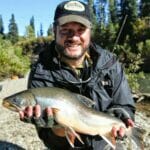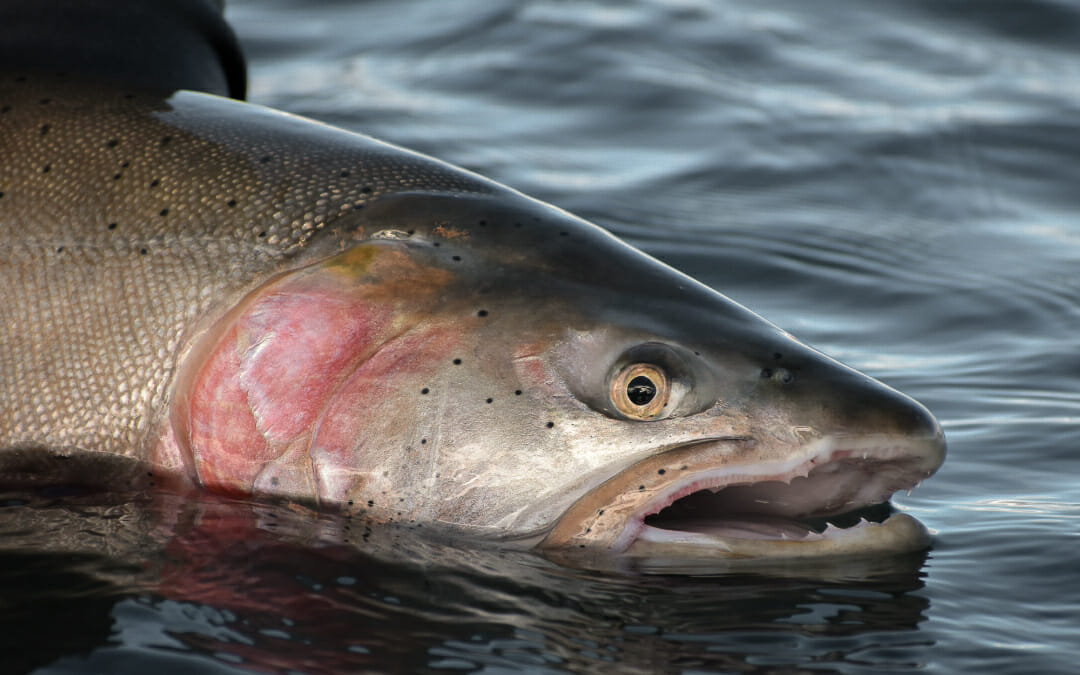A Lahontan cutthroat landed at Pyramid Lake in western Nevada. Aaron Smith – @mrwerbs
By Phaedra Budy
Among the 14 subspecies of cutthroat trout found across Western North America two are now extinct, five are listed as threatened under the Endangered Species Act, and the remainder are, or have been, petitioned to be listed as Endangered Species.
One of those 14 subspecies found in western Nevada has a “salty” past and has gained the attention of anglers eager to land big native fish.
The Lahontan cutthroat trout, currently listed as threatened, is native to northern Nevada, parts of mid-eastern California, and southern Oregon. Lahontans are unique compared to their cutthroat trout relatives because they are much more tolerant to warmer water and saline conditions. Consequently, they have the potential to grow to very large sizes, up to four feet long. Currently however, they have been eradicated from more than 99 percent of their historical lake habitat, including some of the largest lakes they historically occupied, such as Pyramid Lake where the world record 41-pound Lahontan was caught in 1925.

In case you were wondering how Pyramid Lake earned the name. Photo by Nick Heredia/Utah State University
Pyramid Lake in particular was impacted by the construction of the Derby Dam in 1903, 36 miles upstream of Pyramid Lake on the Truckee River . Not only did this restrict access to spawning habitat throughout the Truckee River and tributaries of Lake Tahoe, but it also diverted 50 percent of river water away from Pyramid Lake – the lake’s only water source.
After closure of Derby Dam, lake elevation began to decline dramatically and consistently. These changes and heavy sport and commercial fishing pressure lead to the extirpation of Lahontan cutthroat from Pyramid lake in 1938.
Since 1942, the population in Pyramid Lake has been entirely dependent on stocking for continued persistence, using a mixed-stock recreational strain of LCT that originated from several different source populations. In the late 1970s, however, LCT were discovered in a small stream out of their historic range in the Pilot Peak mountains near the border of Nevada and Utah. These fish were later confirmed to have originated from the Pyramid Lake system—some believe the fish were transplanted from Pyramid Lake to the Pilot Peak range.
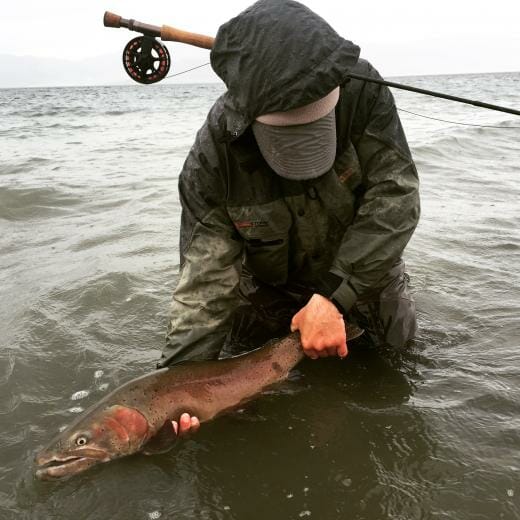
Charles Card with a Lahontan cutthroat caught at Pyramid Lake. Brett Prettyman photo.
To attempt to capture the unique genetic variation of the original Pyramid Lake fish, the Lahontan National Fish Complex started a broodstock of this Pilot Peak strain in 1995 that were eventually stocked in Pyramid Lake in 2006. Before 2006 the Pyramid Lake strain was exclusively stocked, and after 2006 the newly discovered Pilot Peak strain were also stocked.
Lahontan cutthroat are culturally important, and important for subsistence, for the Pyramid Lake Paiute Tribe. The cutthroat also support an extremely valuable sport fishery which, in combination with other recreational use, provides the majority of tribal income — as many as 15,000 are caught each year.
As part of a broader research project, we asked the following questions: Are there any differences in performance between the two strains? Have predator and prey been decoupled due to stocking and lack of natural reproduction? How many cutthroat can the lake support? What are potential management concerns?
Our tag recapture data indicate the Pilot Peak strain are outperforming the Pyramid mixed-stock strain; they are more often longer, heavier and have higher body condition (they are plumper for a given length).
Seventy five percent of their diet is fish, and the cutthroat are still eating predominantly Tui chub, the abundant, smaller minnow they likely thrived upon historically.
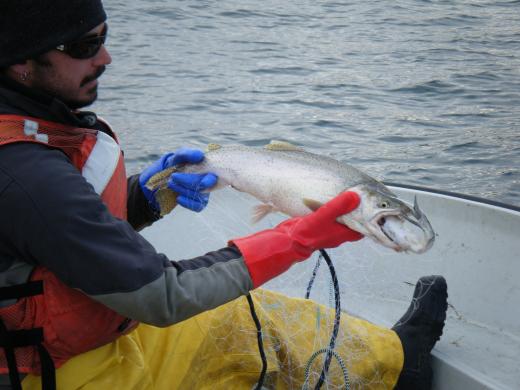
Tui chub are the primary food of Lahnontan cutthroat trout in Pyramid Lake. Photo by Nick Heredia/Utah State University
Based on time integrated tissue samples (diet data are just a snapshot), Pilot Peak strain Lahontan cutthroat also consume up to almost 80 percent of their diet as Tui chub, followed by a smaller proportion of suckers. The Pilot Peak cutthroat in Pyramid Lake are voracious predators at the very top of the food web and are growing at rates near their possible maximum.
We used bioenergetic analyses to estimate annual consumption by cutthroat on Tui chub. These analyses are like a biological checkbook that must balance deposits of food eaten with withdrawals for growth and wastes, given water temperature and abundance of both predator and prey.
Based on those analyses, we estimate an average individual Lahontan cutthroat consumes 65 Tui chub per year. Cutthroat trout in Pyramid lake are consuming about 60-76 percent of the Tui chub biomass available each year. As such, they have not exceeded their carrying capacity, a good thing from a management perspective, as this ensures rapid growth rates and big, fat fish.
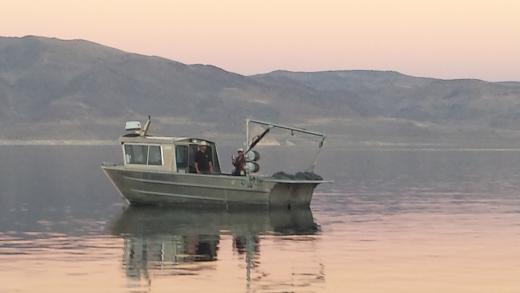
Researchers used boats to collect data for the study. Photo by Nick Heredia/Utah State University
However, there is some evidence that the abundance of Tui chub is declining over time. Tui chub declines may be associated with declining lake level, which causes negative increases in total dissolved solids (like in Walker Lake) and losses in shoreline habitat critical for spawning and rearing.
Managing Lahontan cutthroat means managing Tui chub. A draft Adaptive Management Plan is currently under development with Utah State University, the Lahontan NFH Complex, U.S. Fish and Wildlife Service, Reno, and the Pyramid Lake Fisheries and the Paiute Tribe.
Dr. Phaedra Budy is a professor of aquatic ecology and fisheries management in the Department of Watershed Sciences at Utah State University. She is also Unit Leader for the U.S. Geological Survey – Utah Cooperative Fish & Wildlife Research Unit. This piece was modified from a speech she delivered during the “Talkin’ Trout” event held at the Great Basin Brewing Company in Reno, Nevada, in the early winter of 2017.


